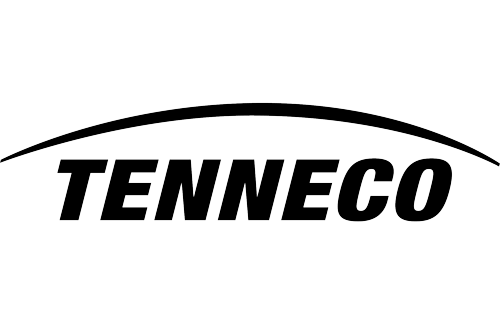INTRODUCING CHANGE
A change was coming – and fortunately for Tenneco, its engineers sensed it early. Shortly after the dawn of a new millennium, the automotive market showed signs of an evolution — one driven by increasingly stringent fuel economy and emissions standards. Tenneco reacted quickly, researching methods to produce more fuel-efficient and eco-friendly parts for its customers.
Motivated by the impending shift, Tenneco took a closer look at its pistons for the light vehicle-diesel market, otherwise known as LVD pistons, which have been traditionally produced from cast aluminum.
A STRONG FOUNDATION
Since the early 90s, Tenneco has utilized MTI’s traditional rotary friction welding process and machines to join its heavy-duty pistons. To this day, the company uses rotary friction welding as its primary joining process because of its quick cycle times, high level of material compatibility, and exceptional weld quality.
As the passenger car engine and piston development landscape evolved to meet increasingly stringent emission requirements, piston development trends became clear:
- Lower piston compression heights
- Higher peak cylinder pressures
- Reduced in cylinder friction
- Higher working temperatures
These trends necessitated a piston material transition from aluminum to steel.
However, because LVD pistons have a more compact geometry than the heavy-duty pistons, the flash formation produced by traditional friction welding would have restricted the cooling gallery in the LVD pistons leading to overheating.
Fortunately, Tenneco had done its homework – its engineers had already developed a Hybrid Induction Welding (HIW) process for welding pistons. It now just needed a partner with strong machine-building and friction welding expertise.
LOOKING TO MTI
Drawing confidence from its proven and lengthy relationship with MTI, Tenneco engineers once again partnered with MTI for joining pistons – but this time to deploy the optimized form of friction welding: Low Force Friction Welding.
“Our experience with solid-state welding, combined with the possibilities [of Low Force Friction Welding] made it extremely appealing,” explained Tenneco Product Engineer Ross Evers.
BENEFITS OF LOW FORCE
Low Force Friction Welding has all the value-added benefits of traditional friction welding, but those advantages are multiplied.
Low Force Friction Welding uses an external energy source to raise the interface temperature of the parts being welded. This reduces the process forces required to make a solid-state weld compared to traditional friction welding.
As a technology, Low Force Friction Welding can provide faster cycle times, reduced flash, smaller machine size and can accommodate a wider range of parts for all industries.
The possibility of reduced flash size was particularly attractive to Tenneco for this application.
“That benefit really ties nicely into the LVD product platforms, where we need to maximize cooling gallery volume for piston temperature control,” said Evers.
The combination of Tenneco’s already-proven HIW process for pistons and the benefits possible with Low Force Friction Welding created a perfect match for the quality-driven process.
“We’ve always had a zero-defect mentality when it comes to a welding process and weld quality,” Evers explained.
AN IMPROVEMENT OVER OTHER PROCESSES
Because Tenneco has such strict quality standards, Evers said beam-based welding processes would open the door to potential failures.
“In rotary friction welding and Low Force Friction Welding, all surfaces are welded simultaneously,” Evers explained. “That eliminates complications of beam-based processes where you have a start/stop position, which is a defect-prone area.”
Low Force Friction Welding also helped eliminate another common problem in beam-based processes: weld spatter. “Low Force Friction Welding has a high level of piston cleanliness,” Evers said. “Weld spatter is a typical issue when it comes to beam-based processes that some of our competitors are using for LVD-sized pistons.”
MORE BENEFITS EMERGE
Tenneco also found significant value in Low Force Friction Welding’s increased ability to maintain a high level of angular position control.
“That’s a key enabler for pistons with asymmetric combustion bowls and pistons with designs requiring in-cylinder orientation,” Evers explained.
Through the robust development process, MTI and Tenneco proved that Low Force Friction Welding could provide extremely high-quality welds with minimal flash formation.
“Low Force Friction Welding is a product enabler,” Evers explained. “It allowed us to design and produce pistons with reduced compression heights, improved cooling galleries, and oil flow based on the minimized flash.”
SUCCESS STORIES FOR CUSTOMERS
It didn’t take long for Tenneco to begin noting improvements in its customers’ processes.
Crediting the benefits it achieved through Low Force Friction Welding, Tenneco was able to provide customers with a 2- 5-percent benefit in fuel economy on its LVD pistons, as compared to previous piston/engine generations.
“That’s mostly due to a reduction of skirt-to-cylinder contact area for in-cylinder friction reduction,” said Evers. “Then, we get a second benefit on the steel side when compared to an aluminum piston of a higher working temperature, which provides a thermodynamic benefit of energy conversion during combustion.”
RESHAPING THE PISTON LANDSCAPE
Tenneco now has a global production footprint, offering pistons joined by Low Force Friction Welding to all major automotive markets, including North America, Europe and Asia.
“Through our combined efforts, we’ve put a lot of these machines into production across the world and have been able to develop some pretty innovative production solutions,” Evers said. “Overall, our customers’ acceptance of the Low Force Friction Welding process allows us to provide a competitive, cost-effective solution with cycle times capable of meeting high production demands,”
Low Force Friction Welding helped Tenneco deliver pistons to its customers that now have:
- Reduced compression heights
- Higher peak cylinder pressures
- Improved gallery cooling
- Improved oil flow
- Higher working temperatures due to transition to steel
- Precise angular positioning
Kevin Grewe, MTI Automotive Sales Manager, says Tenneco’s results are a strong testament to the power and possibilities of Low Force Friction Welding.
“The foundations of traditional friction welding were already solid,” Grewe explained. “But being able to utilize the lower process forces helped us fine-tune the process for Tenneco so they could meet the goals they outlined before we delivered a final product.”


